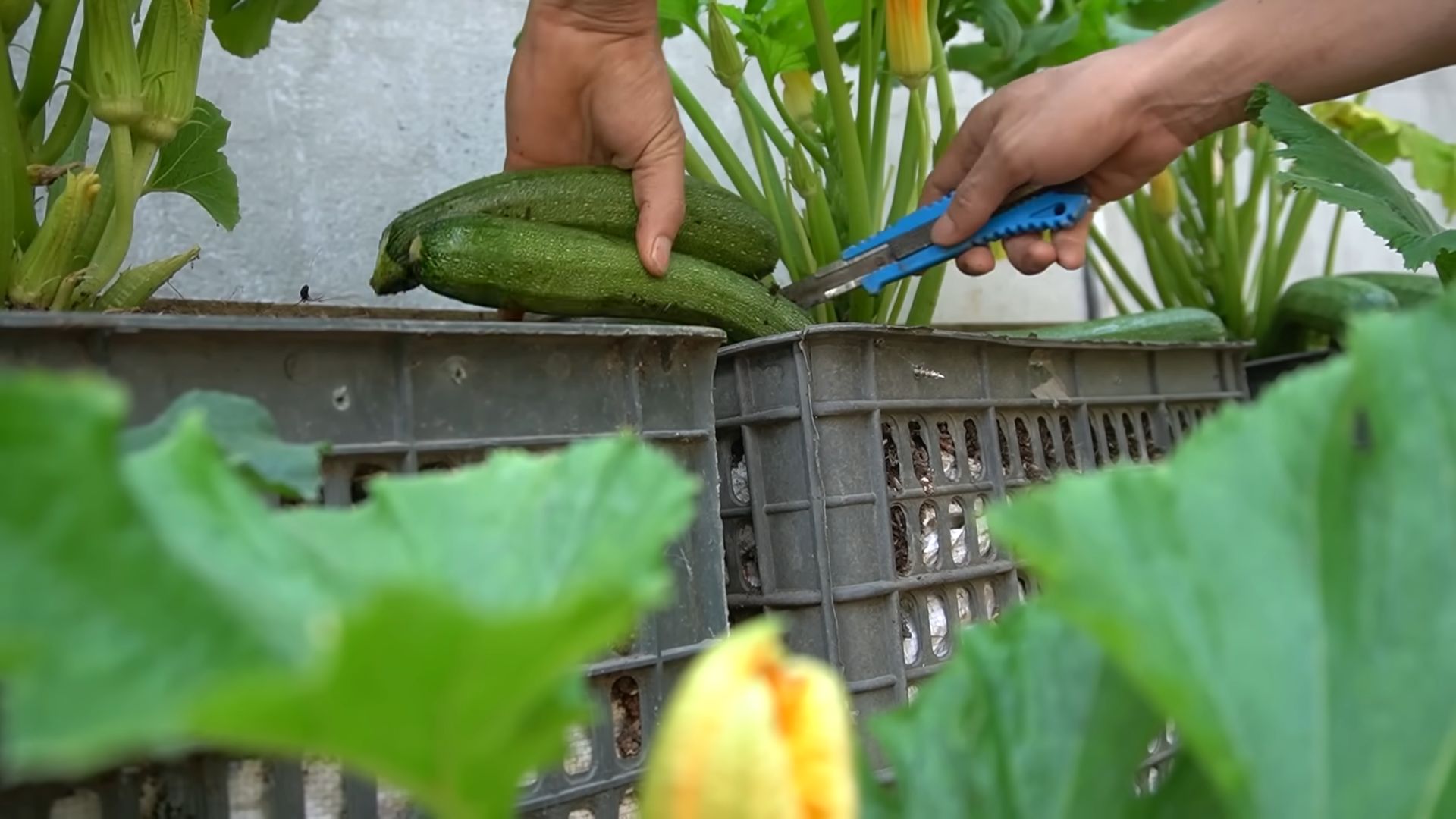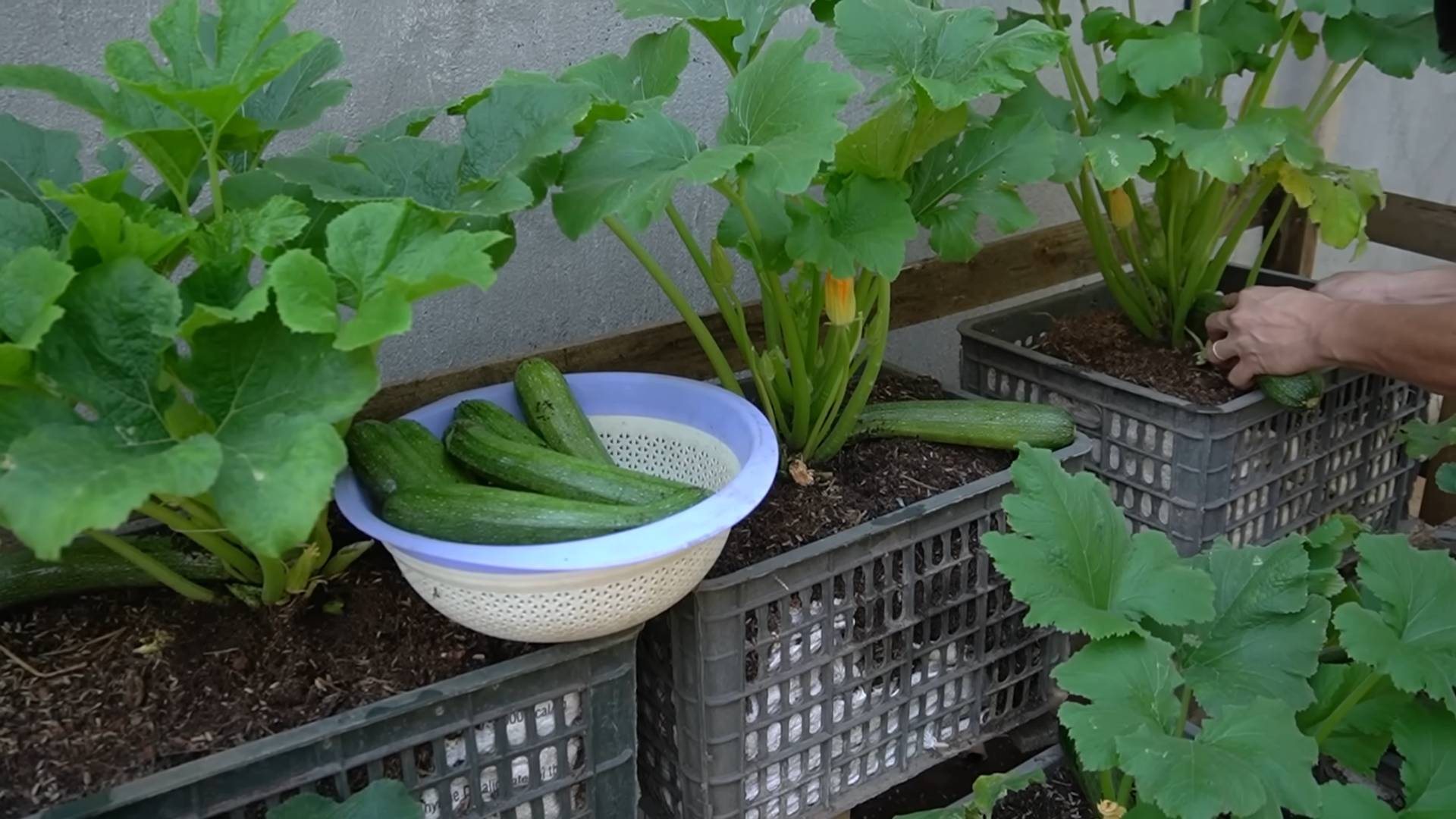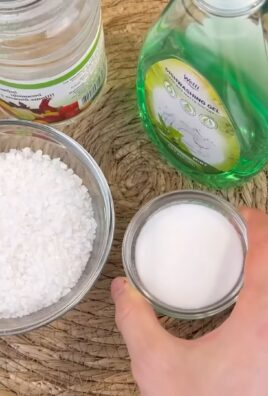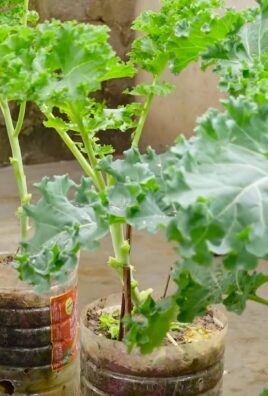Growing zucchini in your home garden can be incredibly rewarding, offering a bounty of delicious and versatile vegetables right at your doorstep. But let’s be honest, sometimes it feels like you’re either drowning in zucchini or struggling to get even a single decent fruit! Have you ever dreamt of effortlessly harvesting basketfuls of perfect zucchini, impressing your neighbors with your green thumb prowess? Well, you’re in the right place! This article is packed with DIY tricks and hacks to help you achieve just that.
Zucchini, a type of summer squash, has a fascinating history. Originating in the Americas, it wasn’t until Italian immigrants brought it to Europe that the zucchini we know and love today truly flourished. It quickly became a staple in Mediterranean cuisine, celebrated for its mild flavor and adaptability. For generations, gardeners have passed down secrets for successful zucchini cultivation, and I’m excited to share some of those time-tested techniques with you.
Why do you need these DIY tricks? Because growing zucchini in your home garden doesn’t have to be a gamble! Many gardeners face common challenges like powdery mildew, squash bugs, or simply poor fruit production. These simple, yet effective, DIY solutions will empower you to overcome these hurdles, ensuring a healthy and abundant harvest. I’m going to show you how to maximize your yield, protect your plants from pests and diseases, and ultimately, enjoy the satisfaction of growing your own delicious zucchini. Let’s get started!

Growing Zucchini: From Seed to Table – A Beginner’s Guide
Hey there, fellow garden enthusiasts! I’m so excited to share my experiences and tips for growing zucchini, one of the most prolific and rewarding vegetables you can cultivate in your own backyard. Get ready for an abundance of delicious zucchini – enough to bake, grill, sauté, and even share with your neighbors!
Choosing Your Zucchini Variety
Before we dive into the nitty-gritty, let’s talk about zucchini varieties. There are tons to choose from, each with its own unique characteristics. Here are a few popular options:
* Black Beauty: A classic, dark green zucchini with a mild flavor. It’s a reliable producer and a great all-around choice.
* Costata Romanesco: An Italian heirloom variety with distinctive ridges and a slightly nutty flavor. It’s a beautiful and flavorful option.
* Golden Zucchini: A bright yellow zucchini that adds a pop of color to your garden and your plate. It has a slightly sweeter flavor than green varieties.
* Round Zucchini (Eight Ball, One Ball): These adorable, spherical zucchinis are perfect for stuffing. They’re also great for grilling or roasting.
I personally love growing Black Beauty because it’s so dependable, but I encourage you to experiment and find the varieties that you enjoy the most!
Preparing Your Garden Bed
Zucchini plants are hungry and thirsty, so preparing your garden bed properly is crucial for success. Here’s what I do:
* Sunlight: Zucchini needs at least 6-8 hours of direct sunlight per day. Choose a location in your garden that gets plenty of sunshine.
* Soil: Zucchini thrives in well-drained, fertile soil. Amend your soil with plenty of compost or well-rotted manure to improve its fertility and drainage. I usually add a few inches of compost to my garden bed before planting.
* Spacing: Zucchini plants can get quite large, so give them plenty of space. I recommend spacing plants at least 2-3 feet apart. If you’re growing in rows, space the rows 3-4 feet apart.
* pH: Zucchini prefers a soil pH between 6.0 and 7.5. You can test your soil pH with a soil testing kit and amend it accordingly.
Starting Zucchini Seeds
You can either start zucchini seeds indoors or direct sow them in your garden. I usually direct sow because it’s easier and zucchini plants grow quickly.
Direct Sowing Zucchini Seeds
1. Wait for Warm Weather: Zucchini seeds need warm soil to germinate. Wait until the soil temperature is consistently above 60°F (16°C) before planting. This is usually a couple of weeks after the last frost in your area.
2. Prepare the Planting Holes: Dig holes about 1 inch deep and 2-3 feet apart.
3. Sow the Seeds: Place 2-3 seeds in each hole. This increases the chances of at least one seed germinating.
4. Cover the Seeds: Cover the seeds with soil and gently water the area.
5. Thin the Seedlings: Once the seedlings emerge and have a few true leaves, thin them to one plant per hole. Choose the strongest and healthiest seedling to keep.
Starting Zucchini Seeds Indoors (Optional)
If you want to get a head start on the growing season, you can start zucchini seeds indoors 3-4 weeks before the last frost.
1. Use Seed Starting Trays or Pots: Fill seed starting trays or small pots with a seed starting mix.
2. Sow the Seeds: Sow 1-2 seeds per cell or pot, about 1 inch deep.
3. Water Gently: Water the seeds gently and keep the soil moist but not soggy.
4. Provide Warmth and Light: Place the trays or pots in a warm location (around 70-75°F or 21-24°C) and provide plenty of light. You can use a grow light or place them near a sunny window.
5. Harden Off the Seedlings: Before transplanting the seedlings outdoors, you need to harden them off. This means gradually exposing them to outdoor conditions over a period of 7-10 days. Start by placing them in a sheltered location for a few hours each day, gradually increasing the amount of time they spend outdoors.
6. Transplant the Seedlings: Once the seedlings are hardened off and the weather is warm enough, transplant them into your garden bed, spacing them 2-3 feet apart.
Caring for Your Zucchini Plants
Once your zucchini plants are established, it’s important to provide them with proper care to ensure a bountiful harvest.
* Watering: Zucchini plants need consistent watering, especially during hot, dry weather. Water deeply at the base of the plants, avoiding wetting the foliage. I usually water my zucchini plants every 2-3 days, or more often if the soil is dry.
* Fertilizing: Zucchini plants are heavy feeders, so fertilize them regularly with a balanced fertilizer. I like to use a liquid fertilizer every 2-3 weeks. You can also side-dress the plants with compost or well-rotted manure.
* Mulching: Mulching around your zucchini plants helps to retain moisture, suppress weeds, and regulate soil temperature. I use straw or wood chips as mulch.
* Pest Control: Zucchini plants can be susceptible to pests such as squash bugs, squash vine borers, and aphids. Inspect your plants regularly for signs of pests and take action to control them. I use organic pest control methods such as hand-picking pests, using insecticidal soap, or applying neem oil.
* Pollination: Zucchini plants have separate male and female flowers. The female flowers need to be pollinated in order to produce fruit. If you’re not seeing any fruit develop, you may need to hand-pollinate the flowers. To hand-pollinate, simply take a male flower and rub its pollen onto the stigma of a female flower. You can identify female flowers by the small zucchini fruit at the base of the flower.
Harvesting Your Zucchini
Zucchini plants are incredibly productive, and you’ll likely be harvesting zucchini for several weeks.
* Harvest Time: Zucchini is best harvested when it’s young and tender, usually when it’s about 6-8 inches long. Overripe zucchini can become tough and seedy.
* How to Harvest: Use a sharp knife or pruning shears to cut the zucchini from the plant. Be careful not to damage the plant.
* Harvest Regularly: Harvest zucchini regularly to encourage the plant to produce more fruit. If you leave zucchini on the plant for too long, it will signal to the plant that it doesn’t need to produce any more.
Dealing with Common Zucchini Problems
Even with the best care, you might encounter some problems while growing zucchini. Here are a few common issues and how to address them:
* Powdery Mildew: This fungal disease can cause a white, powdery coating on the leaves. To prevent powdery mildew, provide good air circulation around the plants and avoid wetting the foliage when watering. If you see signs of powdery mildew, you can treat it with a fungicide.
* Squash Bugs: These pests can suck the sap from zucchini plants, causing them to wilt and die. Hand-pick squash bugs and their eggs from the plants. You can also use insecticidal soap or neem oil to control them.
* Squash Vine Borers: These pests bore into the stems of zucchini plants, causing them to wilt and die. To prevent squash vine borers, wrap the base of the stems with aluminum foil or pantyhose. You can also inject Bacillus thuringiensis (Bt) into the stems to kill the borers.
* Blossom End Rot: This condition causes the blossom end of the zucchini to rot. It’s usually caused by calcium deficiency or inconsistent watering. To prevent blossom end rot, amend your soil with calcium and water your plants consistently.
Recipes and Uses for Your Zucchini Harvest
Now for the fun part – enjoying your zucchini harvest! There are endless ways to use zucchini in the kitchen. Here are a few of my favorites:
* Grilled Zucchini: Slice zucchini lengthwise, brush with olive oil, and grill until tender.
* Sautéed Zucchini: Dice zucchini and sauté it with garlic, onions, and other vegetables.
* Zucchini Bread: Grate zucchini and use it to make delicious zucchini bread or muffins.
* Zucchini Noodles (Zoodles): Use a spiralizer to turn zucchini into noodles and serve them with your favorite sauce.
* Stuffed Zucchini: Hollow out zucchini and stuff it with rice, meat, or vegetables.
* Zucchini Fritters: Grate zucchini and mix it with flour, eggs, and seasonings to make fritters.
* Zucchini Soup: Blend zucchini

Conclusion
So, there you have it! Mastering the art of growing zucchini in your home garden is not only achievable, but incredibly rewarding. We’ve explored the key steps, from selecting the right variety and preparing your soil to warding off pests and harvesting your bountiful crop. But why is this DIY approach a must-try?
Firstly, the taste. Store-bought zucchini simply can’t compare to the fresh, vibrant flavor of homegrown produce. Imagine biting into a zucchini that was picked just hours before, bursting with sweetness and a satisfying crunch. The difference is undeniable.
Secondly, control. When you grow your own zucchini, you have complete control over what goes into your food. You can choose to use organic methods, avoiding harmful pesticides and herbicides. This ensures that you’re feeding yourself and your family the healthiest possible food.
Thirdly, the satisfaction. There’s a unique sense of accomplishment that comes from nurturing a plant from seed to harvest. Watching your zucchini plants thrive and produce an abundance of fruit is incredibly fulfilling. It’s a connection to nature that’s often missing in our modern lives.
But the journey doesn’t end here! Feel free to experiment with different zucchini varieties. Try growing golden zucchini for a splash of color, or round zucchini for a unique presentation. You can also explore companion planting to enhance the growth of your zucchini and deter pests. Consider planting basil, marigolds, or nasturtiums nearby.
And don’t be afraid to get creative with your harvest! Zucchini can be used in countless dishes, from savory to sweet. Grate it into muffins and breads, slice it into salads, or grill it for a delicious side dish. You can even make zucchini noodles as a healthy alternative to pasta.
We encourage you to embark on this exciting adventure of growing zucchini in your home garden. It’s a fun, educational, and rewarding experience that will provide you with fresh, delicious produce for months to come.
Don’t forget to share your experiences with us! We’d love to hear about your successes, challenges, and favorite zucchini recipes. Post photos of your garden, share your tips, and let’s create a community of zucchini enthusiasts. Happy gardening!
Frequently Asked Questions (FAQs)
What is the best time to plant zucchini?
The ideal time to plant zucchini is after the last frost, when the soil has warmed to at least 60°F (15°C). Zucchini is a warm-weather crop and is sensitive to frost. Planting too early can stunt its growth or even kill the plant. In most regions, this means planting in late spring or early summer. You can start seeds indoors 3-4 weeks before the last expected frost to get a head start, but be sure to harden them off before transplanting them outdoors. Check your local weather forecast and planting guides for specific recommendations for your area.
How much sunlight does zucchini need?
Zucchini plants require at least 6-8 hours of direct sunlight per day to thrive. Sunlight is essential for photosynthesis, the process by which plants convert light energy into chemical energy for growth. Insufficient sunlight can lead to weak, leggy plants with reduced fruit production. Choose a sunny location in your garden for your zucchini plants, and make sure they are not shaded by trees or buildings.
What kind of soil is best for growing zucchini?
Zucchini prefers well-drained, fertile soil that is rich in organic matter. The soil should have a slightly acidic to neutral pH, ideally between 6.0 and 7.0. Before planting, amend the soil with compost, aged manure, or other organic materials to improve its fertility and drainage. Avoid heavy clay soils, which can become waterlogged and inhibit root growth. If you have clay soil, consider planting zucchini in raised beds or containers.
How often should I water my zucchini plants?
Zucchini plants need consistent moisture, especially during hot, dry weather. Water deeply and regularly, aiming to keep the soil consistently moist but not waterlogged. Water at the base of the plant to avoid wetting the foliage, which can increase the risk of fungal diseases. A good rule of thumb is to water when the top inch of soil feels dry to the touch. Mulching around the plants can help retain moisture and suppress weeds.
How do I prevent pests and diseases from attacking my zucchini plants?
Several pests and diseases can affect zucchini plants, including squash bugs, squash vine borers, powdery mildew, and blossom end rot. To prevent these problems, practice good garden hygiene, such as removing plant debris and weeds. Inspect your plants regularly for signs of pests or diseases, and take action promptly if you notice any problems. Use organic pest control methods, such as insecticidal soap or neem oil, to control pests. Ensure good air circulation around the plants to prevent fungal diseases. Blossom end rot is often caused by calcium deficiency or inconsistent watering, so make sure your soil is rich in calcium and water your plants regularly.
When is the right time to harvest zucchini?
Zucchini is best harvested when it is young and tender, typically when it is 6-8 inches long. Overripe zucchini can become tough and seedy. Use a sharp knife to cut the zucchini from the plant, leaving a short stem attached. Harvest regularly to encourage continued production.
Can I eat zucchini blossoms?
Yes, zucchini blossoms are edible and delicious! They can be stuffed, fried, or added to salads. Harvest the male blossoms, which do not produce fruit, to avoid reducing your zucchini yield. Pick the blossoms in the morning when they are fully open.
How do I deal with powdery mildew on my zucchini plants?
Powdery mildew is a common fungal disease that affects zucchini plants, causing a white, powdery coating on the leaves. To prevent powdery mildew, ensure good air circulation around the plants and avoid overhead watering. If powdery mildew appears, you can treat it with organic fungicides, such as neem oil or baking soda spray. Remove and destroy severely affected leaves to prevent the disease from spreading.
What are some good companion plants for zucchini?
Companion planting can help improve the growth of zucchini and deter pests. Good companion plants for zucchini include basil, marigolds, nasturtiums, onions, garlic, and beans. Basil repels squash bugs and other pests, while marigolds and nasturtiums attract beneficial insects that prey on pests. Onions and garlic deter squash vine borers, and beans fix nitrogen in the soil, which benefits zucchini.
How can I store zucchini after harvesting?
Zucchini can be stored in the refrigerator for up to a week. Wrap it loosely in plastic wrap or store it in a perforated plastic bag to prevent it from drying out. You can also freeze zucchini for longer storage. Grate or slice the zucchini and blanch it in boiling water for a few minutes before freezing. This will help preserve its texture and flavor.





Leave a Comment